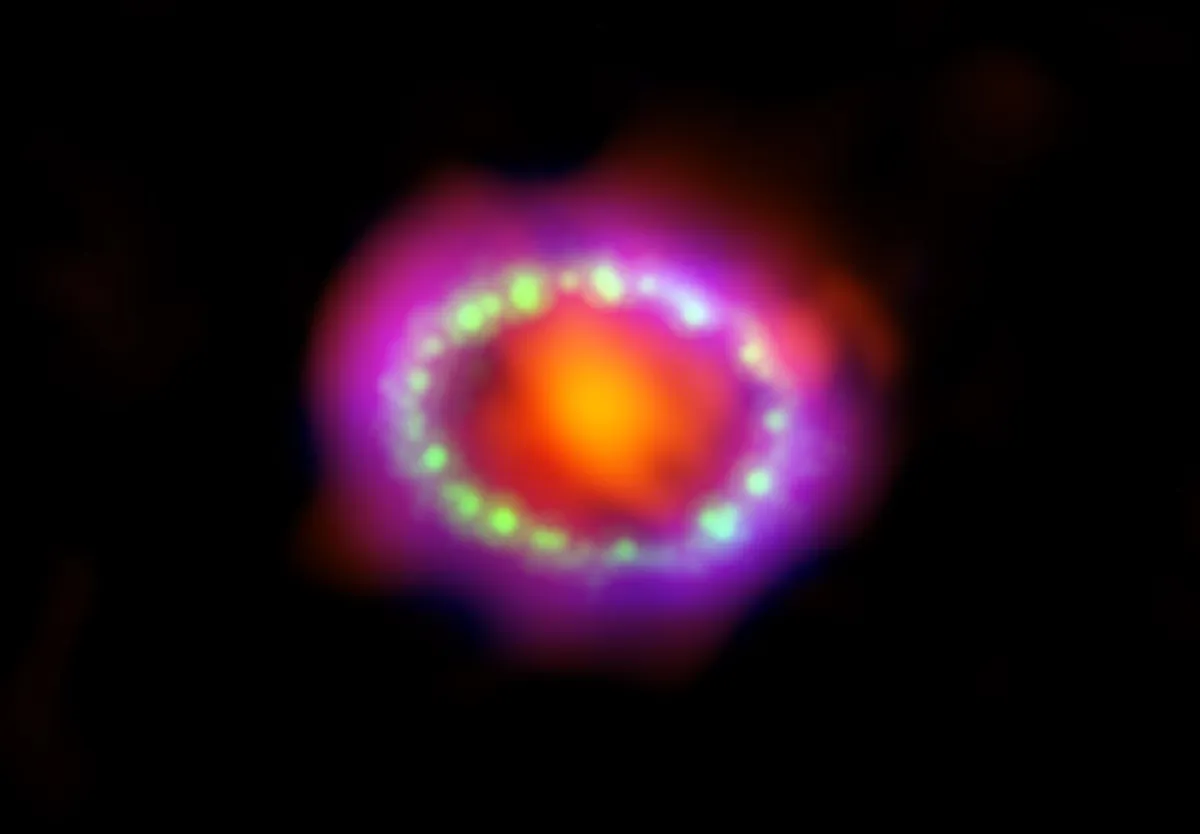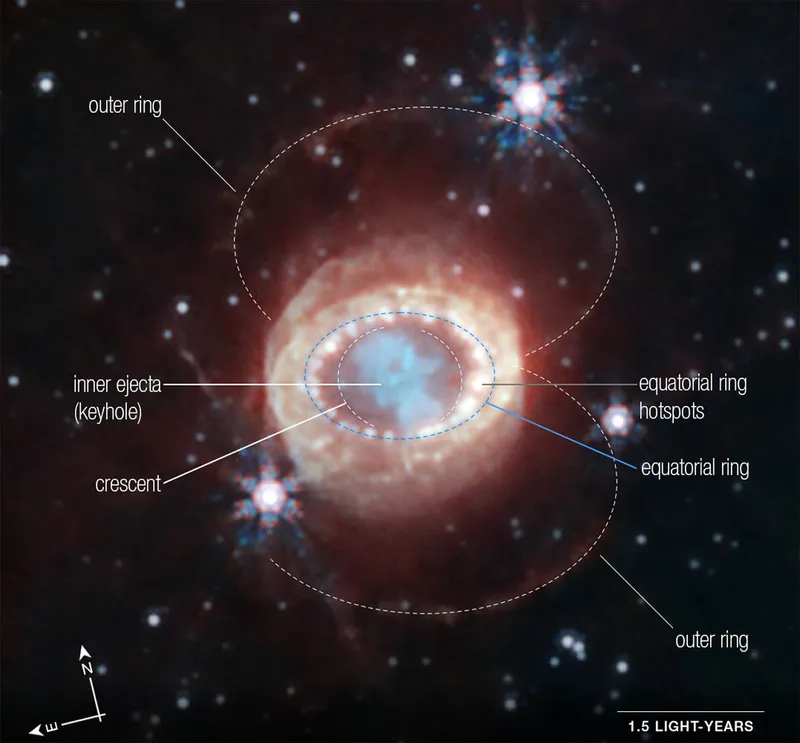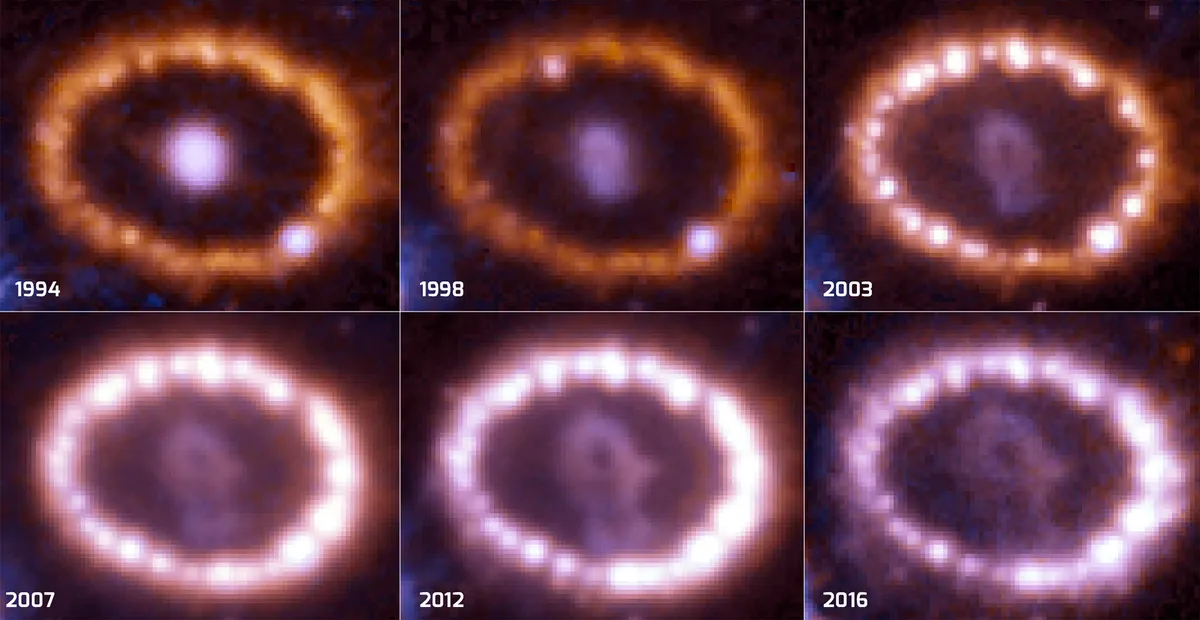The James Webb Space Telescope has captured a new image of Supernova 1987A, one of the most famous exploding stars.
The image shows more clarity and detail than in any image of the supernova captured previously.
SN 1987A is 168,000 lightyears away in the Large Magellanic Cloud, a satellite galaxy of our own Milky Way galaxy.
The supernova was discovered in 1987 and has been studied intently over subsequent decades at multiple wavelengths.

Iconic observatories like the Spitzer space telescope and Hubble Space Telescope have been among those to study the supernova.
Now the Webb Telescope has begun observing SN 1987A in infrared using its NIRCam (Near-Infrared Camera) instrument.
The observations are revealing how the supernova evolves over time and shapes the nebulaic supernova remnant around it.
Webb's SN 1987A image explained

In the Webb image of SN 1987A, we see a central keyhole structure (like Webb's Ring Nebula image).
This core is densely packed with cosmic gas and dust ejected by the stellar explosion.
It's so dense that even Webb, with its penetrating infrared vision, can't see through it.
Around this dense region is a bright 'equatorial' ring that connects two outer rings pushing outwards from the supernova.
This equatorial ring is formed from material that was ejected tens of thousands of years before the final supernova explosion.
Bright clumps can be seen. These are the locations where the supernova shockwaves collided with the ejected material.
Unseen until now are the crescent-like stuctures, thought to be part of outer layers of gas ejected by the supernova.

What next for Webb and SN 1987A?
Webb will carry out further observations of SN 1987A to find out more about the object itself, but also about the nature and evolution of supernovae.
Dr Mikako Matsuura of Cardiff University’s School of Physics and Astronomy is leading the analysis of the new images.
“SN 1987A is the closest supernova explosion to Earth detected for the last 400 years," she says.
"Over that time, it has been observed by almost all major ground-based telescopes in the southern hemisphere and through different generations of space telescopes as well.
“For JWST to reveal previously unknown features such as these crescent shapes in the outflow of the supernova was a big surprise and speaks to the telescope’s abilities to present well-studied structures in new and exciting ways.
“Spitzer observed SN 1987A in infrared for its entire lifespan and gave us an important understanding of how the light from the supernova remnant changes over time.
"But it was never able to achieve the level of clarity and detail which JWST has delivered with these new images."
